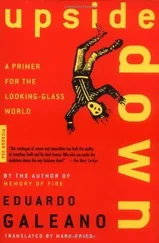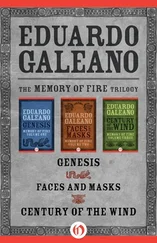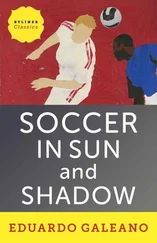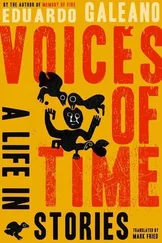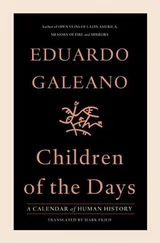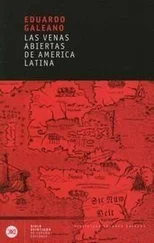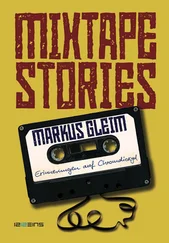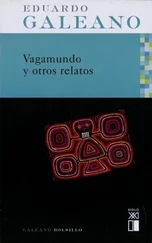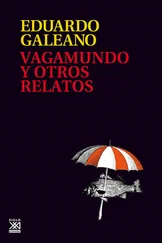When it isn’t drought, it’s flood. Year after year the number of never-ending floods, hurricanes, and cyclones grows. They call them natural disasters, as if nature were the aggressor and not the victim. World-killing disasters, poor-killing disasters: in Guatemala they say natural disasters are like old cowboy movies, because only the Indians die.
Why do the stars tremble? Perhaps they sense that soon we shall invade other heavenly bodies.

In the year 1586, Spanish priest Josep de Acosta caught sight of it in the town of Tule, three leagues from Oaxaca. “A bolt of lightning wounded this tree from the crown through its heart to the base. Before it was hit by lightning, they say it offered shade for a thousand men.”
And in 1630, Bernabé Cobo wrote that the tree had three doors wide enough to ride through on horseback.
It is still there. It was born before Christ, and it is still there. The oldest and largest living thing in the world. In the dense foliage of its branches, thousands of birds make their home.
This green god is doomed to solitude. No jungle is left to keep it company.

Horses whinnied, coachmen cursed, whips whistled through the air.
The noble gentleman was in a fury. He had been waiting for what felt like centuries. His carriage was blocked by another carriage that was vainly trying to turn around amid many other carriages. He lost the little patience he had left, got out, unsheathed his sword, and sliced open the first horse he saw.
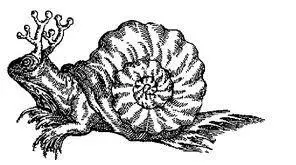
That happened one Saturday at dusk in the year 1766 at the Place des Victoires in Paris.
The noble gentleman was the Marquis de Sade.
Today’s traffic jams are even more sadistic.

They are the most important members of our family.
They are gluttons, devouring gas, oil, corn, sugarcane, and anything else that comes their way.
They own our time: bathing them, feeding and sheltering them, talking about them, and opening the way for them.
They reproduce faster than we do, and are ten times as numerous as they were half a century ago.
They kill more people than do wars, but no one condemns the murders, least of all the newspapers and television channels that live off their advertisements.
They steal our streets. They steal our air.
They laugh when they hear us say: “I drive.”
BRIEF HISTORY OF THE TECHNOLOGICAL REVOLUTION

Be fruitful and multiply, we said, and machines were fruitful and they multiplied.
They promised they would work for us.
Now we work for them.
The machines we invented to produce more food now produce more hunger.
The weapons we invented to defend ourselves now kill us.
The cars we invented to transport us now paralyze us.
The cities we invented so we could meet each other now keep us apart.
The mass media we invented so we could communicate now neither hear nor see us.
We are the machines of our machines.
They claim innocence.
And they are right.

In the middle of the night, people woke up to a nightmare: the air was on fire.
The year was 1984, and in the city of Bhopal, India, a Union Carbide Corporation factory exploded.
None of the security systems worked. Or better put: profitability sacrificed safety by imposing drastic cost reductions.
A crime termed an accident killed many thousands, and left many more ill for life.
In the south of the world, human life is priced according to supply. After a lot of tussling, Union Carbide paid three thousand dollars for each person killed, and a thousand for each left incurably ill. Its prestigious lawyers rejected the demands of the survivors, arguing that illiterates were incapable of understanding what their thumbprints had signed. The company did not clean up the water or the air of Bhopal, which remain contaminated, nor did it clean up the earth, which remains poisoned with mercury and lead.
Instead, Union Carbide cleaned up its image, paying millions to the priciest makeup specialists in the world.
A few years later, another chemical giant, Dow Chemical, bought the company. The company, that is, not its account book: Dow Chemical washed its hands, denied any responsibility in the matter, and sued the women protesting at its doors for disturbing the peace.

One spring night in 1986, the nuclear power plant at Chernobyl blew up.
The Soviet government decreed silence.
Many died, a multitude survived as walking bombs, but TV, radio, the newspapers heard nothing, said nothing. And at the end of three days, when they did mention it, they did not violate the gag order. No one warned that we faced a new Hiroshima. On the contrary, they insisted it had been a minor accident, nothing at all, everything under control, nobody get upset.
The farmers and fishermen on lands and waters both near and far knew that something very serious had occurred. They heard the bad news from the bees, wasps, and birds that took flight and vanished over the horizon, and from the worms that burrowed several feet underground, leaving the fishermen without bait and the chickens without food.
A couple of decades later, a tsunami struck South Asia and gigantic waves swallowed another multitude.
As the tragedy was brewing, when the earth had barely begun to move deep under the sea, elephants raised their trunks and blared desperate laments. No one understood when the beasts broke their chains and stampeded into the jungle.
Flamingos, leopards, tigers, boars, deer, water buffalo, monkeys, and snakes also fled before the disaster.
The only ones to die were the humans and the turtles.

Nature had not yet been committed to the insane asylum, but it already suffered from periodic nervous breakdowns that warned of things to come.
At the end of 1966, the Arno River’s dream of having a flood all its own came true, and the city of Florence faced the worst inundation in its entire history. In a single day, Florence lost more than it had in all the bombings of the Second World War.
Soon after, Florentines knee-deep in mud set to rescuing whatever might have survived the shipwreck. There they were, men and women, dripping wet, working, cursing the Arno and all its relatives, when a long truck came barreling past.
The truck carried an enormous body mortally wounded by the flood: the head bounced along over the rear wheels and a broken arm hung over the side.
As the wooden giant passed, men and women put aside their shovels and pails, uncovered their heads, crossed themselves. And in silence they watched it disappear from view.
He too was a son of the city of Florence.
This Jesus crucified, Jesus broken, had been born here seven centuries ago from the hand of Giovanni Cimabue, teacher of Giotto.
Читать дальше









